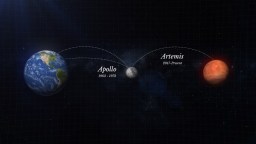TESS satellite identifies nearby, potentially habitable super-Earth

NASA Ames/JPL-Caltech/Tim Pyle
- The TESS satellite recently identified a nearby super-Earth sitting in the habitable zone of its star.
- TESS isn't equipped to make the sensitive measurements necessary to characterize the planet's atmosphere, but models suggest the planet could have running water, a major indicator that it can host life.
- The upcoming James Webb Space Telescope will be able to look at this planet in greater detail and assess whether life exists on it or not.
The TESS satellite has uncovered a celestial neighbor that not only might host life, but that’s also very close by. The newly discovered exoplanet dubbed GJ 357 d is just a little over 31 light-years away.
“This is exciting, as this is TESS’s first discovery of a nearby super-Earth that could harbor life, said astronomer Lisa Kaltenegger in a statement. “TESS is a small, mighty mission with a huge reach.” TESS, which stands for the Transiting Exoplanet Survey Satellite, was launched in April of 2018 with the goal of detecting exoplanets using what’s known as the transit method. Simply put, this method measures the brightness of a star and looks for any dips in the overall brightness as an orbiting planet crosses between the satellite and the star.
Using this method, astronomers first identified a different planet, GJ 357 b, which is a “hot Earth” roughly 22 percent larger than our own planet, whose equilibrium temperature was estimated at around 485 degrees Fahrenheit (252 degrees Celsius). As astronomers continued to monitor the star, they uncovered two siblings of GJ 357 b: GJ 357 c, which was also an extremely hot planet roughly 3.4 times the size of Earth, and GJ 357 d, which sits right in the habitable zone around its host star.
The size, orbit, and proximity of GJ 357 d makes it seem like the planet could be capable of hosting life, but one more feature needs to be confirmed first: the presence of an atmosphere. “With a thick atmosphere, the planet GJ 357 d could maintain liquid water on its surface like Earth, and we could pick out signs of life with telescopes that will soon be online,” said Kaltenegger.
Waiting on Webb
TESS isn’t designed to characterize the atmospheres of exoplanets, but the upcoming James Webb Space Telescope (JWST) will be able to pick targets identified by TESS and look at them in more detail. With a planned launch date in 2021, JWST will be the successor to the famous Hubble telescope. In addition to observing the first stars to form in our universe, JWST will also characterize the atmospheres of promising exoplanets like GJ 357 d. Using its infrared telescope, JWST will be able to observe what light filters through an exoplanet’s atmosphere (if it has one), and then researchers can extrapolate what its atmosphere is made of. With luck, GJ 357 d’s atmosphere will be similar to Earth’s, meaning that life can thrive on the planet.
Signs of alien life?
If GJ 357 d does indeed have an atmosphere, then it may have a shot at hosting life. Kaltenegger and her team modeled a variety of potential atmospheres, such as those with and without oxygen and the kinds of atmospheres one would see on a rocky planet or a water world. In particular, if GJ 357 d has geological activity like volcanism, then its atmosphere will have more C02. Here on Earth, our C02 levels are a bit of a problem, but on other planets, it could increase the temperature enough to ensure that running water flows across the planet’s surface.
Now that TESS has identified GJ 357 d as a possible candidate for possessing an atmosphere and hosting life, JWST will be able to examine the planet in greater detail once it’s launched. If it confirms that GJ 357 d has an atmosphere capable of hosting life, it’s possible that JWST will also be able to identify signs of that life. On Earth, the cumulative effect of life has an impact on our planet’s atmosphere — JWST will be sensitive enough to search for similar biosignatures in the atmosphere of an alien planet, adding more evidence to the case for extraterrestrial life. But in the vastness of the universe, the first step lies in knowing where to look, and TESS has just given us a very excellent candidate.





